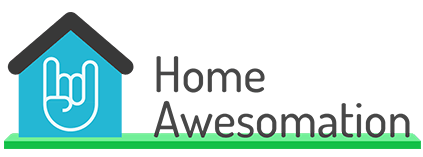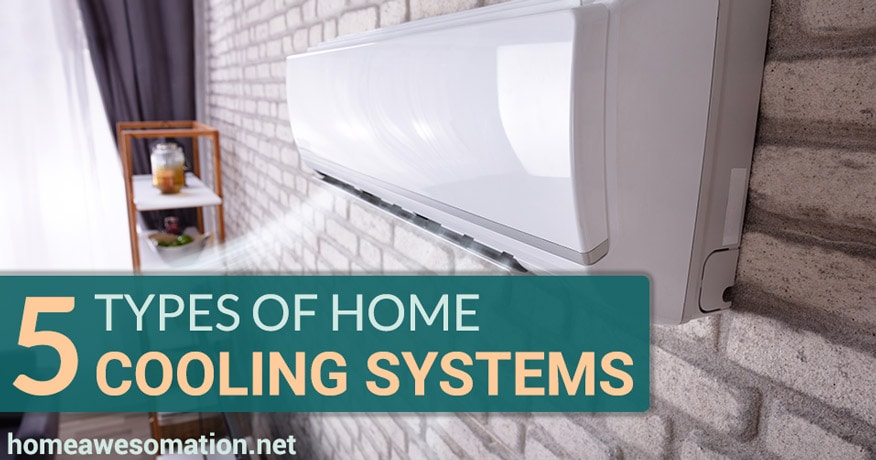
When summer comes around, you want to be ready with the right type of air conditioning system.
But what type of air conditioner should you buy for your house? There are a wide variety of cooling systems, and each has its own pros and cons. No one air cooling system will be right for all houses and climates.
Central air conditioners are the most commonly used cooling system, efficiently handling air in one central location. But they’re not right for every home, and they require you to run ducts that take up a significant amount of space.
Other types of cooling systems, such as split system air conditioners, allow you to cool off individual rooms in your house. Air is handled in small units placed on the wall of each room, so you can only cool the rooms where you spend the most time.
In addition, you can find a number of less commonly used air cooling systems. These systems, such as heat pumps, evaporative coolers, and fans, are well suited for specific types of houses and climates.
Here, we’ll discuss everything you need to know about the main types of home cooling systems. There isn’t one system that will work for every house, so consider the specifics of your home and the area where you live before choosing a unit.
Types of Home Cooling Systems
| Cooling System Type | Pros | Cons |
|---|---|---|
| Central Air Conditioner |
|
|
| Ductless Mini Split Air Conditioners |
|
|
| Evaporative Cooling System |
|
|
| Heat Pump |
|
|
| Fan |
|
|
Ductless Mini Split System Air Conditioners
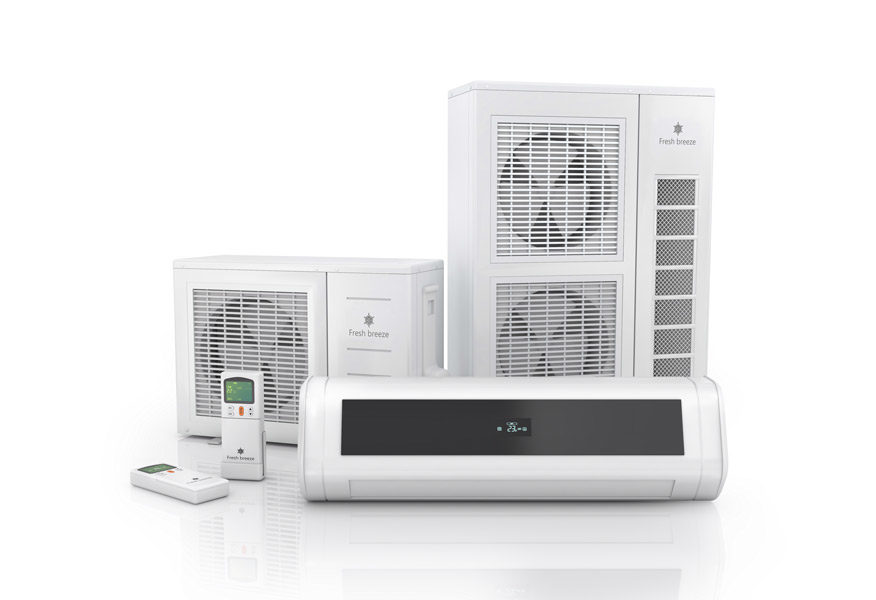
Pros
- Easy to install (compared to ducted systems)
- Dedicated cooling in each room
- Energy efficient
Cons
- Multiple units required
- External units can take up valuable space
Ductless mini split system air conditioners are the most commonly used cooling system overseas, where buildings are less likely to have central air.
With split system air conditioners, each room has its own mini air handler that connects to the outside air conditioning unit. Since each room handles its own air, you don’t have to worry about running ducts.
One of the main advantages of using mini split air conditioners is that they allow you to control the temperature in individual rooms. This makes it easier to change the temperature quickly in certain areas throughout your house.
You can also save energy and money by using split air conditioners. You only have to run units in areas where you plan on saving time, meaning you don’t have to waste money cooling the whole house.
Split air conditioners can save space, as you won’t have to run large ducts throughout your house. However, you’ll also have to find the space to put a unit in each room that you want cooled.
Additionally, many split system air conditioners have heating built in, so you won’t have to install a separate heating system.
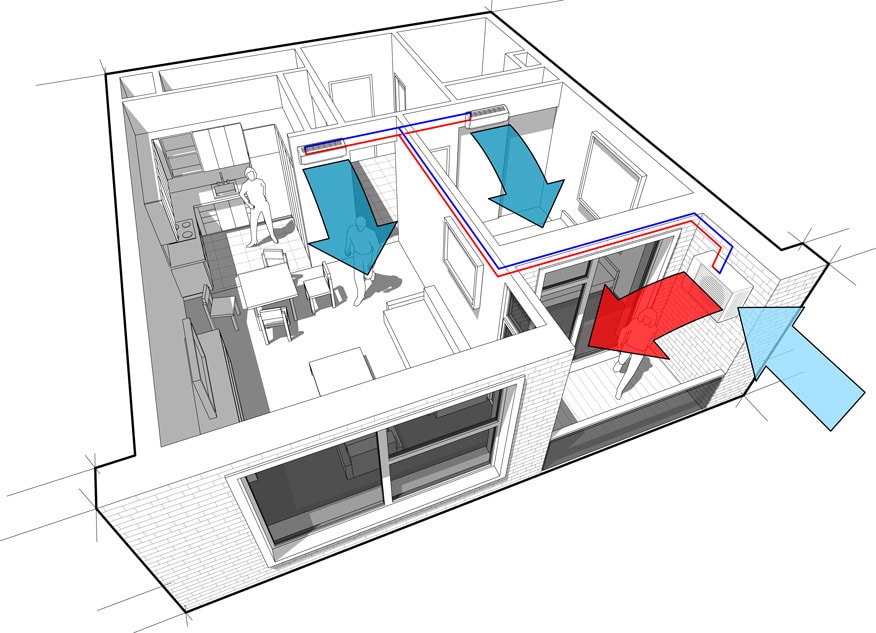
The main drawback of using a mini split air conditioner system is the cost of the units. You’ll have to buy individual air handlers for each room of the house, which can cause costs to rise quickly.
You’ll also have to connect all of the individual units to the outside air conditioner. Although you won’t have to use ducts, you’ll still need to have enough space to run air lines outside.
That said, split air conditioners can save you money down the road by cutting energy bills. They’re one of the most versatile cooling systems you can buy, and are perfect for houses and apartments where running central air ducts is not possible.
Central Air Conditioner
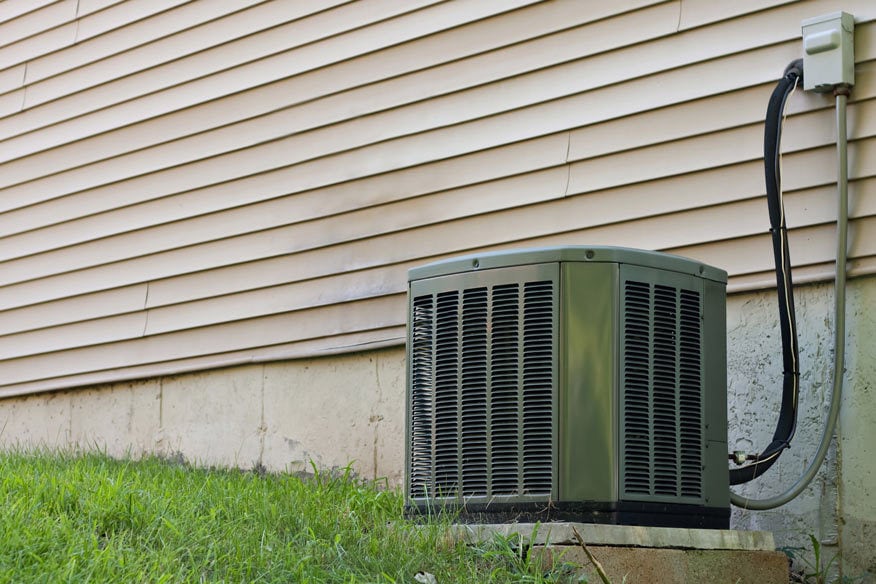
Pros
- Air is often filtered
- Save money on air conditioning units
Cons
- Requires air ducts
- External units can take up valuable space
- Can be expensive to install
Central air conditioners connect the outdoor air cooling system to a unit located inside the house. Cooling coils lower the temperature of the air, which is then distributed throughout the house via air ducts.
The main advantage of using a central air system is cost. You won’t have to buy individual air conditioners for each room, as all of the air is handled from one central location.
Since all of the air is processed in one central location, it’s much easier to filter. If you have bad allergies and live in an area with a lot of pollen, central air conditioners can help make it easier to breathe.
There are a few drawbacks to using central air conditioners. They aren’t quite as efficient as many other systems, especially if they were installed more than a decade ago. This can drive up costs, as well as waste energy.
In addition to this, not all central air conditioners let you control the temperature of specific rooms. That means you may have to cool areas of the house where you don’t spend much time, leading to extra energy costs.
You also can’t as easily adjust individual room temperatures so that everyone in the house can set the thermostat so that they’re comfortable.
Central air conditioners require a decent amount of maintenance. Fortunately, they are the most common type of cooling system, and most technicians spend most of their time working with them. This lowers the risk of improper installation, and it’s usually fairly easy to find someone to repair your unit.
Central air conditioners are one of the best cooling options if you have a large house with many large areas that need to be cooled. However, they are not the best choice for smaller houses or apartments.
Evaporative Cooling System
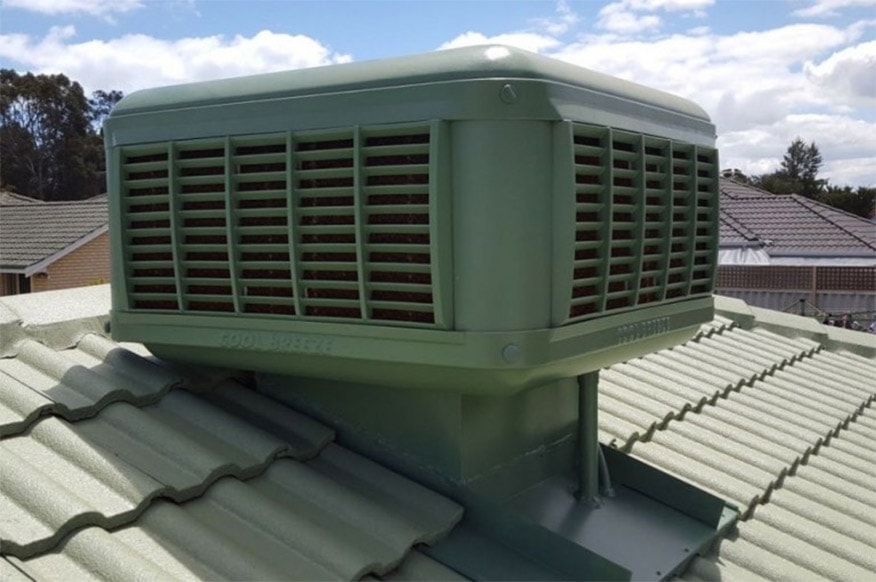
Pros
- Saves money on energy bills
- Adds moisture to dry air
Cons
- Doesn’t work in humid climates
- Uses quite a bit of water
Evaporative cooling systems aren’t quite as common as the other types of cooling systems discussed here. However, they are often used in areas with very hot and dry climates, and they can be an effective way of quickly lowering the temperature in your house.
Evaporative cooling systems work by drawing dry air into a central fan, which then combines the air with moisture. This lowers the temperature of the air, which is then circulated throughout your house.
One of the main upsides to using evaporative cooling systems is that they save money on electricity. They only require a few moving parts, making them less energy intensive than central air systems.
Evaporative cooling systems blow moist air throughout your home. In certain conditions, this can be a positive, keeping the air from getting too dry and affecting your skin. However, if you already live in a humid area, evaporative coolers can make the air too moist.
The main drawback of evaporative coolers is that they can’t be used in all climates. If you live in hot and humid areas, the cooling mechanism won’t work well, so the fan will just blow hot, humid air throughout your house and may cause puddles to form.
Heat Pumps

Pros
- Efficient
- Heats and cools
- Can control humidity
Cons
- Can be noisy
- Expensive up front
Heat pump cooling systems transfer heat from one area to another. Because of this, they can be used to both cool and heat your house.
By transferring heat from one place to another, heat pumps can save money on energy. This makes them an efficient cooling option, although they won’t work as well in extremely hot environments.
The main downside to using heat pumps is the installation cost. They require a fairly big one time investment to get started, and installation is about as involved as central air conditioners.
In addition, they are also a bit noisy. If you live right next to your neighbors, the noise of the unit could potentially bleed into the houses nearby.
Heat pumps require about as much maintenance as central air conditioners. If there are any leaks, the system won’t work, so proper maintenance is crucial.
If you plan on using a heat pump, make sure the air conditioner technician who installs it has the right experience. Many technicians haven’t spent much time with heat pumps, which can lead to improper installation.
If you are using a heat pump as your main heating source during the winter, you will only be able to raise the temperature a certain amount in your house. That’s because the pump takes heat from outside to warm your house. If the temperature is very low, it won’t be able to gather enough heat to transfer inside.
For anyone looking to save space by combining heating and cooling, heat pumps are an excellent option. They can save you money in the long term on electricity bills, and won’t take up much space in your house.
See this article for more info on how heat pumps work.
Fans
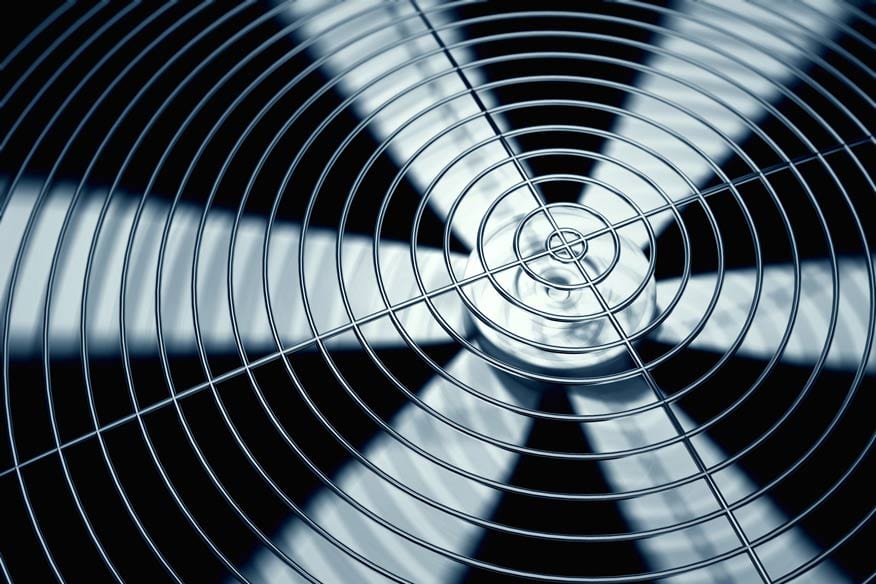
Pros
- Affordable
- control temperature in different areas
Cons
- Can only drop temperature a few degrees
- Can be noisy
Fans are the most commonly used cooling system, circulating air throughout the room to give you the feeling of a cool breeze.
Since fans don’t directly lower air temperature, they don’t utilize nearly as much energy as the other cooling systems discussed here. This makes them a good option if you want to save money on your electricity bill.
Fans also let you just cool off the rooms where you spend the most time, making them even more energy efficient. You can move them around as well, making them a bit more flexible than other cooling systems.
Since you won’t have to spend any money on installation or air conditioning units, you can save a significant amount of money compared to most of the other systems discussed here. They require little maintenance, and most will run for years. You also save space, as you won’t have to run ducts throughout the house.
Although fans can be useful on hot days, they will do little to actually reduce the temperature in your home. This makes them the least effective cooling method on this list.
They also aren’t a great option if you live in areas with extreme temperatures or high humidity. They will simply blow hot air at you, which is even worse in humid areas.
choose the right cooling system
The right cooling system is one of the best ways to live in comfort throughout the year. But there are a wide range of different cooling systems, making it difficult to find the one that’s right for your home.
Central air conditioners are the most commonly used type of cooling system. They can be more efficient than other systems, as they handle air in one central location.
Other systems, such as mini split system air conditioners, use individual air handlers to cool each room of the house. This can save money, as you won’t have to cool the whole house at once.
If you live in dry areas, you can use evaporative coolers, which are more energy efficient than most of the other cooling systems discussed here. In addition to cooling your home, these systems can add moisture to dry air.
The right air conditioner for your home will depend on how many rooms you need to cool, as well as the climate of the area. Use the guide here to find the cooling system that best suits your needs.
